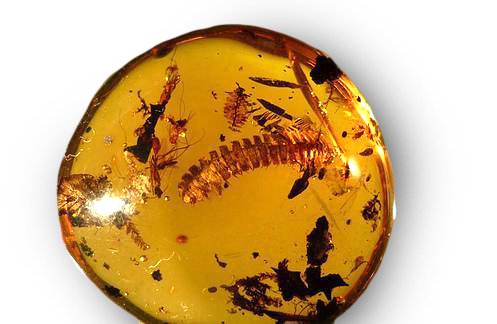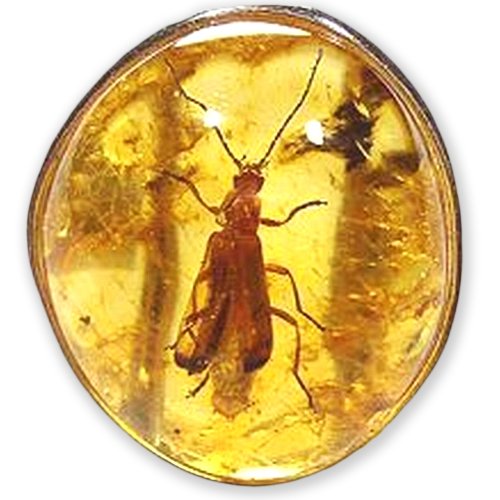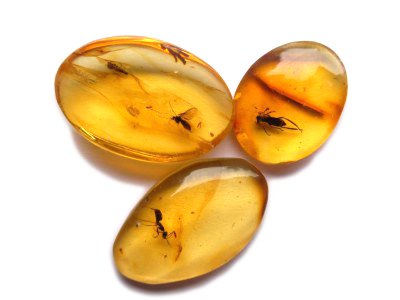In the natural amber sometimes can meet well-saved inclusion - winged insects, leaves, stems, flowers, sometimes spiders; even lizards. Such inclusions are quite rare and cost much more than an ordinary stone, but if you are interested in such a product for your collection, you can view the entire range on the yantar.ua website. Such inclusions in solid transparent stone are very spectacular. But first of all this amber past interesting appearance, is of great scientific importance. When the philosopher Kant, looking at the trapped in amber fly, said: "Oh, if you little fly, could speak, as otherwise, it would be all our knowledge about the past of the world". Scientists now use amber, just for the study of the past, as it can be judged on the forms of life in the past millions of years before us. Thanks to preserved amber seeds, leaves, flowers, stems, bark, pollen, etc. all the vegetation of forests is well understood. With the exception of a few species in the forests grew types, similar to modern thujas, swamp cypresses, chestnuts, oaks, maples, willows, magnolias, and many others.
Ejected from the resin trees was quite viscous, judging by the provisions of insects. Flies, deceived Shine, sit down and stick, and the tar covering their new threads. Insects larger sometimes managed to break free, but in the resin could remain their legs or fingerprints on it, scientists have an idea about the size and appearance of these insects. The total number of all captive in amber is great more than 300 kinds, but they are quite rare. Paleontologist A. Bakhoven writes that it seems there is a family of worms, insects, spiders, and other, which do not have their representative in this collection. For example, in one piece (about 20 cm in diameter) containing over 250 small flies.
Scorpions, dragonflies, grasshoppers, large and small beetles, ants, earthworms, caterpillars, centipedes, mosquitoes, flies and many others hide in amber. Even a web with spiders and caught flies, various pincers and parasitic insects survived. Less often, lizards, rodents, suits of various animals.
Some insects have survived all changes that happened with the Mesozoic, and they still live (for example, leafhoppers). Others at the end of the century extinct, replaced by surviving relatives. Some (horsemen) arose only in the Cretaceous and exist until now.

Feature arthropods found in amber
Inclusions false scorpions in amber there are 12 genera, 9 families. Current members of this team is extensively distributed in nature, but not visible, as are hidden way of life, are found in mosses, forest humus, under the roots of trees, under exfoliating bark, in the pores and nests of vertebrates, and caves. Some of them live in human dwellings. Common in all parts of the world, and they are the most diverse in the tropics.
Inclusions Opiliones in amber are from 8. families. Easily identified by their small body (0.6 cm) and long (up to 16 cm) feet that can easily be separated. So that was how most Opiliones were saved from your enemies. Obviously, this explains the rather frequent discoveries mired in Amber's legs. Very widespread from tropical to polar countries. More active in twilight or at night, prefer very wet habitats and constantly live and forest litter and other secluded places.
Inclusions spiders — one of the most numerous groups. Known 41 the family of this squad. Numerous traces of their activity: barely visible under a magnifying glass filament cobwebs with droplets of water and dried cells of insects. The composition of the fauna of spiders is very typical for the different zoogeographic realms. Found in amber species that lived in the open, well-sunlit field and in the forest litter, moss, herbaceous and woody vegetation, under the bark, and in the hollows of trees. Many are close to the species living only in the present time in tropical and subtropical areas.
Inclusions mites in amber are 29 families. Found in soil, forest litter, clusters of different plant residues, rotting wood, fungi, and lichens. Amber is dominated by small species of Diptera and primitive wingless insects.
Inclusions diplura in amber, are investigated insufficiently. Refers to only one type of the passage diplura-kampodeya, known in the modern fauna. All diplura are hidden ways of life hidden in the soil, anthill, and rotten wood, not coming to the surface.

Inclusions Collembola is frequent in amber. These small arthropods distributed everywhere, where there is mosses and lichens. Especially a lot of them in the tropics, however, caught they are given in the temperate latitudes of the Arctic and Antarctica. The abundance of springtails in amber explains conditions, their habitat (mildewed remains of plants), favorable for entering the pitch, and the ability of insects jump start even repelled by the surface film of water. Of the modern types in amber found springtail water, smintur green.
Inclusions thysanura in amber are quite rare. This heat-loving creature being conducting a hidden life. More winged insects in amber.
Inclusions cockroaches — a very ancient group. In amber known insects are 13 generations living in the forests of the warm and humid climate. Lead the night, hidden life.
Termites in amber are not rare; common in warm countries, tropics and subtropics.
Inclusions Orthoptera in amber presented grasshoppers and crickets inhabiting open mining areas.
Inclusions freckles extracted from amber, are investigated insufficiently. The few descriptions are, apparently, to this caddis fly living near reservoirs, active during the day or at dusk.
Inclusions embioptera live in dry areas under the rocks and among the fallen leaves, in tubular passages with braiding web. In amber found one type.
Inclusions Pincher in amber represent the kinds of families Giardia and forfikulide; most of them are nocturnal, heat and hygrophilous.
Inclusions psocoptera in amber across quite often, however, are investigated poorly. Favorable conditions for the existence psocoptera are created in forests: on the bushes, trunks and branches of trees, covered with moss and leaves.
Inclusions mayfly in amber are rare, they are poorly researched. Found species, larvae live in the fast streams and rivers.

Inclusions dragonflies (actually dragonflies and beauty) — the inhabitants of standing water.
Inclusions bugs (bugs) are rare in amber. Their habitat reservoirs with standing or slowly flowing water.
Inclusions thrips are fairly common in amber. Live flowers or flowers of the plants where they find food crawling between stamens and petals.
Inclusions Strepsiptera found in amber is one kind of family menagerie, known as a fossil form of lower lignite. It parasitizes thysanura.
Inclusions fleas - are extremely rare.
Inclusions caddisflies are common in amber. Among them more species, of larvae inhabit the net fast-flowing streams; are active at night.
Inclusions Lepidoptera (butterflies). Known science 8000 species in amber found 51 views.
Inclusions Hymenoptera are mainly represented by ants, rare bees and wasps.
Inclusions Diptera over half of all insects found in amber. Dominated by the animal's family Nematocera uniting mosquitoes and other types of mosquito.
Inclusions Vistula Wings found in amber is not only in the form of larvae ordinary вислокрылки, inhabiting plants and logs the shores of water bodies, but also as adults. Adult alderflies live a few days, but as a rule, shorten their life, once in the resin.
Inclusions lacewing in amber are rare but are a large number of types of families
Inclusions snakefly found in amber in the form of larvae of the genus without eyes living under the bark of trees, the litter, and soil.
Inclusions scorpionfly presents the views of families scorpions in mosquitoes inhabiting moist deciduous forests and meadows.
Inclusions Coleoptera (bugs) — one of the most valuable for paleobotanical reconstructions group of insects. Among them prevail grinders and click beetles inhabiting damp deciduous forests.
